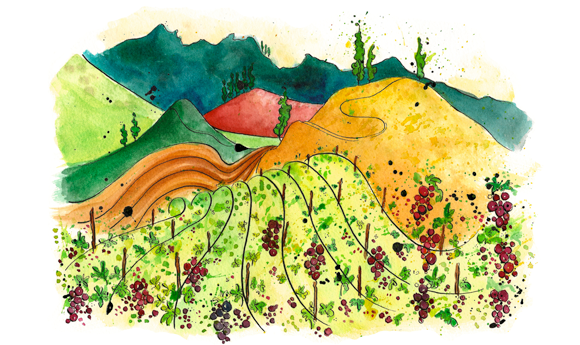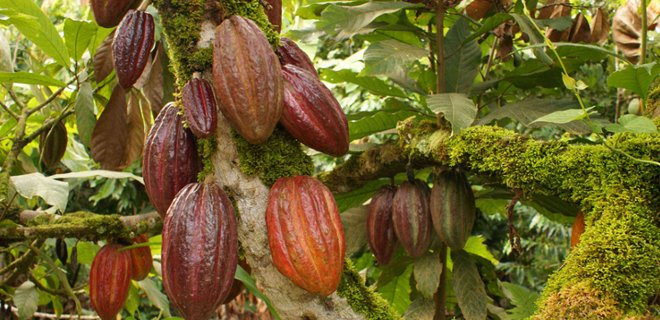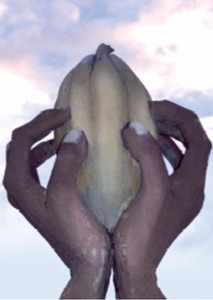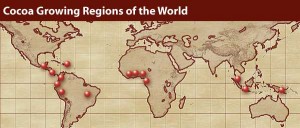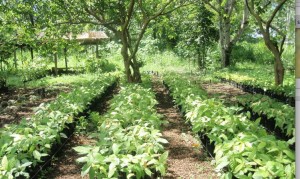Photo Source: https://kakawsana.wordpress.com/2012/12/06/el-cacao-es-un-facilitador-para-abrir-el-corazon-y-la-mente/
This component of the Case Study assignment asks each group to create short written explorations of the following disciplinary perspectives as they related to chocolate.
Cultural Studies-
Terroir and taste are multifaceted concepts. Both of which differ from region to region and person to person. It’s not just the soil, climate, or the ecology of a region that determines taste for individuals but rather a complex relationship of sensory integration and the emotional response certain foods evoke within us. For instance during class after we had eaten the Hershey Kisses my mind drifted back to my grandfather and the Hershey Kisses he would keep in his refrigerator in which he allowed himself one a night for dessert. Similarly Steve mentioned to the class something along the lines of “doesn’t the Hershey’s chocolate just remind you of a campfire and smores.”. Surely we both ate the same mass produced chocolate with a high degree of quality control which ensures that each pieces flavor notes barely differ from one to the next, yet the same piece brought about a different memory and emotional recall for the both of us.
Geology/Soils-
Throughout the reading in Sustainable [R]evolution and my talks with fellow classmates, I found myself asking the question, what role does permaculture/Geology and soils play into Terroir. I understood that ecosystems and everything encapsulated within them such as soil conditions, plant life, wind, solar, precipitation etc. etc. affect the way something grows and ultimately its terroir expressed through flavor. “One of my second cousins who still lives in Lebanon once told me that they had tried to sow the anise seeds from Mount Hermon in the agricultural soils of the Beqa Valley, but the seeds didn’t much take to the valley soil, and the few that germinated, grew, flowered, and fruited didn’t produce seeds that tasted the same.” (Nabhan 84). Thinking about this quote helped me put things into perspective. The seeds from the mountain that Nabhan’s cousin tried to plant in the valley did not propagate in the way he had intended, they ultimately didn’t taste as great as ones that grow on the mountain. The same plant species grown in two different locations tastes different. My understanding of permaculture at this point in time is that the ultimate goal is to use land in a way that harnesses the natural systems while not altering the design much from the environment in which they are found. Ultimately re creating the surrounding environment within your design. Of course the same species will taste differently when all the factors aren’t the same, just like how an apple or blueberry won’t taste the same if you deny yourself one of the senses such as smell. Thinking about permaculture in this way allows me to understand more clearly its role in regards to terroir.
Natural History-
When talking about the ecology of an environment, human sensory systems, permaculture designs, or human relationships, it’s important to recognize that each are interconnected webs of complex relationships. An action in one of the systems affects the rest of its incorporated parts. All of the systems listed above are in one way or another inextricably linked with Terroir. “One of the most important things about permaculture is that it is founded on a series of principles that can be applied to any circumstance – agriculture, urban design, or the art of living. The core of the principles is the working relationships and connections between all things.” (Birnbaum & Fox 17)
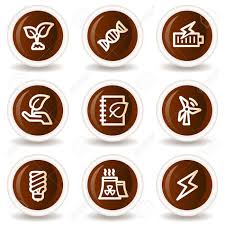
natural history photo link
Business-
Economics
The Solomon Islands have not had any previous association with cocoa at all- but what they are familiar with are coconuts. Cocoa made its’ first debut on the islands about 70ish years ago, but in the grand agricultural world that is not a long time. The farmers are not producing cocoa that meets the standards, rather the expectations that the world had for its’ cocoa production. Having their cocoa crop intertwined under the canopy of their well-established coconut trees, they often don’t have a problem with finding the space to grow them. Another, is that these are very community-based small scale farmers. They often bounce back off of each other and help each other out: they are not independent from one another, rather much more dependent. An important piece as well is the climate. What you find for building materials is overwhelmingly tin and concrete. In the tropical setting, tin corrodes quite rapidly. So you’ll see that many cocoa farmers start out really strong then they quickly find that they make do with what they have. As an outsider, you might see it as rural-ish and not up to par when in reality, many farmer’s equipment is perfectly functional. All of these little things really add up to the greater economics that go on in the Solomon Islands revolving around cocoa; the islanders that grow it and the people of the world that buy it.
Geography-
The Solomon Islands:
The main islands are rather large and rugged, rising 7,000+ feet on Guadalcanal. They are two parallel island chains that run northwest-southeast. They were formed as part of the volcanic arc extending from New Ireland in Papua New Guinea to Vanuatu. They are part of the Ring of Fire that wraps around the pacific and the soils are volcanic in result. As they are also within the 20+/- degrees of the equator, they have a climate that is classified as tropical oceanic. Rain will fall year-round adding up to an average of 120-140 inches and the temperatures rarely exceed 90 degrees F. Although the terrain is mountainous, they do have extensive plains to the north that have been developed for large-scale agriculture. The plains is where they have their main source of agricultural economy- coconut plantations. The cocoa they do have are grown alongside and with their coconuts.
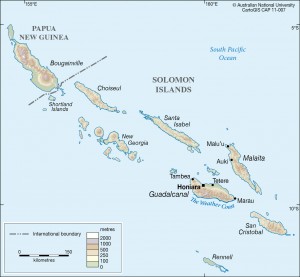
Solomon islands Map link
Integrative Question-
My ideal cacao production and distribution system is one that is not solely cacao based. To start out, I would love to see cacao grow alongside many other crops, such as coconuts or rubber trees, hardwoods, and various other greens that make it possible to grow minimalistically. Often times we have to mend and work the soil over and over. Surely, there are times when there are certain circumstances. If we have the right balance of plantings there would be no need to spend much time and energy manipulating the environment. Another benefit to planting alongside other “cash crops” is that you wouldn’t have farmers that are at the mercy of just the cacao market. Growers in the Solomon Islands are already doing that as they’re incorporating their cacao crop into their already established coconut production. Even without that well established culture of cacao, I see that the farmers are already contributing greatly to all that it can be. A piece I would also like to see improvement is the labor practices in the cacao market. Chocolate has a long history with imperialism, slavery, colonialism and it is still evident to this day. We like to think that the terrible times of that era are far behind us and that the workers are being treated fairly. Sadly, the reality is far from that in the overwhelming majority of cases. Anyone in the chocolate business is usually fully aware of the circumstances. Yet, too few people are actually doing anything about it. My ideal is far from what it is today. We all want a better tomorrow- whether it be for our children, our businesses or even ourselves. It’s said that “nothing worth fighting for can be achieved in a lifetime”, but that shouldn’t stop us from trying.
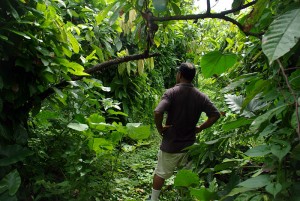
Overgrown cacao farm link

